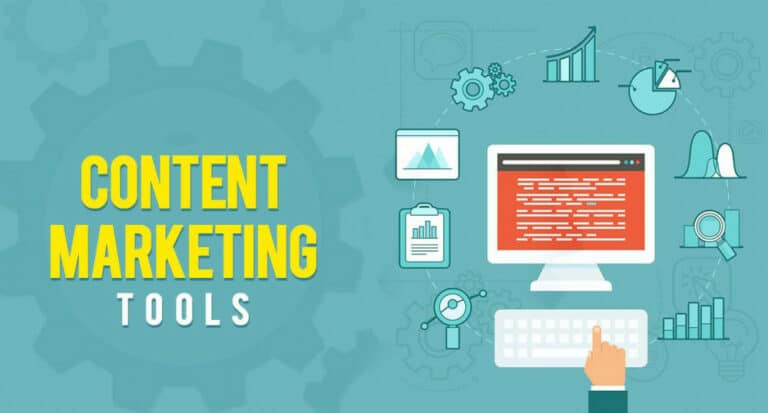Transform Decisions With Data-Driven vs Data-Informed
Data-Driven vs Data-Informed — two powerful approaches shaping today’s business decisions. While both rely on data, their application and impact differ greatly.
Understanding these methods helps you make smarter choices, align with goals, and avoid common pitfalls. Whether you want predictive accuracy or balanced insights, knowing the difference can transform your strategy.
Let’s explore how each approach works and when to use them for maximum success.
What Does Data-Driven Mean?
Being data-driven means allowing data to guide all business decisions. It implies a heavy reliance on quantitative metrics, statistics, and analytics reports.
Leaders who adopt this approach trust data as the ultimate truth, often sidelining intuition or experience. For example, a data-driven marketer might launch a campaign solely based on customer behaviour reports, even if the idea conflicts with their creative instincts.
Companies like Amazon and Netflix are known for leveraging massive datasets to refine their operations and customer experiences.
However, the risk lies in overfitting decisions to data without considering market shifts or human factors that raw numbers might miss.
What Does Data-Informed Mean?
Data-informed decision-making uses data as a supportive tool rather than the sole dictator of actions. It acknowledges the importance of insights while also valuing human expertise, creativity, and situational awareness.
A data-informed leader considers analytics but questions anomalies, explores contexts, and incorporates stakeholder input before deciding.
For instance, a retailer may notice declining online sales, but instead of reacting solely to the numbers, they might investigate customer feedback or market trends before acting.
Companies like Apple blend data insights with visionary leadership and design thinking. This balanced method reduces the risk of unthinkingly following flawed data and fosters decisions that resonate more with real-world dynamics.
Pros And Cons Of Data-Driven vs Data-Informed
Data-driven and data-informed approaches shape modern decision-making. Understanding their differences, pros, and cons helps businesses choose strategies that balance factual insights with human judgment for better outcomes.
Data-Driven Approach – Pros
1. Objective Decision-Making
Data-driven decision-making removes the guesswork and eliminates personal biases by relying strictly on measurable, verifiable data.
When decisions are made based on accurate statistics, analytics, and KPIs, organizations are more likely to achieve predictable and consistent outcomes.
This approach fosters transparency and accountability, especially in performance reviews and strategic planning. Teams align around precise numbers rather than subjective opinions.
Whether forecasting sales, analyzing customer behaviour, or evaluating marketing campaigns, data ensures that decisions are evidence-based.
However, this requires access to reliable data sources and a culture that values factual analysis over gut feelings or assumptions, making the organization more disciplined and objective in its processes.
2. Predictive Accuracy
Using data analytics allows businesses to forecast trends, customer behaviours, and possible outcomes with high accuracy.
Predictive models can analyze historical data patterns, identify emerging market trends, and suggest likely future scenarios. This insight helps companies make proactive decisions rather than reactive ones.
For example, retail companies can predict seasonal demand spikes and stock accordingly, reducing inventory costs. Additionally, financial forecasting, risk management, and client retention tactics all heavily rely on predictive analytics.
However, its effectiveness depends on the quality of data input and the sophistication of analytical tools used. Businesses that invest in strong data infrastructure can better navigate uncertainties with confidence.
3. Scalability
In the discussion of data-driven vs data-informed strategies, scalability benefits most from data-driven systems that automate decisions and ensure consistent growth.
When a business uses structured data workflows, it’s easier to expand into new markets or increase production without compromising efficiency.
Data analytics platforms can be integrated across departments, ensuring consistent performance tracking and reporting.
Automation tools powered by data insights can streamline marketing, customer service, and supply chain management. For example, e-commerce platforms use data to automate recommendations and pricing strategies at scale.
With proper infrastructure, businesses can grow confidently, knowing that their decisions are backed by scalable, data-supported systems that adapt quickly to increasing demands and complexity.
4. Performance Tracking
One significant advantage of a data-driven approach is the ability to track key performance indicators (KPIs) in real time. Businesses can track metrics like sales conversions, customer engagement, or website traffic with precision.
This allows for quick adjustments to strategies when results deviate from targets. Real-time dashboards provide leadership with up-to-the-minute information, enhancing responsiveness and operational control.
By setting clear benchmarks based on data, organizations can evaluate performance consistently across teams and departments.
This approach also supports continuous improvement, as trends and anomalies are easier to spot with ongoing tracking, ultimately leading to better decision-making, operational efficiency, and goal achievement.
5. Consistency
In the data-driven vs data-informed framework, a data-driven approach excels at ensuring consistency through standardized metrics and aligned decision-making across the organization.
When all departments work with the same data sets, metrics, and performance indicators, there’s less room for misinterpretation or subjective judgments.
This uniformity ensures that strategic goals are pursued with a shared understanding and coordinated effort. For instance, the same consumer data can be used to synchronize the plans of the marketing, sales, and customer service teams.
Consistent data use also helps with compliance and audit requirements. However, maintaining consistency requires robust data governance policies and clear communication across the organization to prevent discrepancies or data silos.
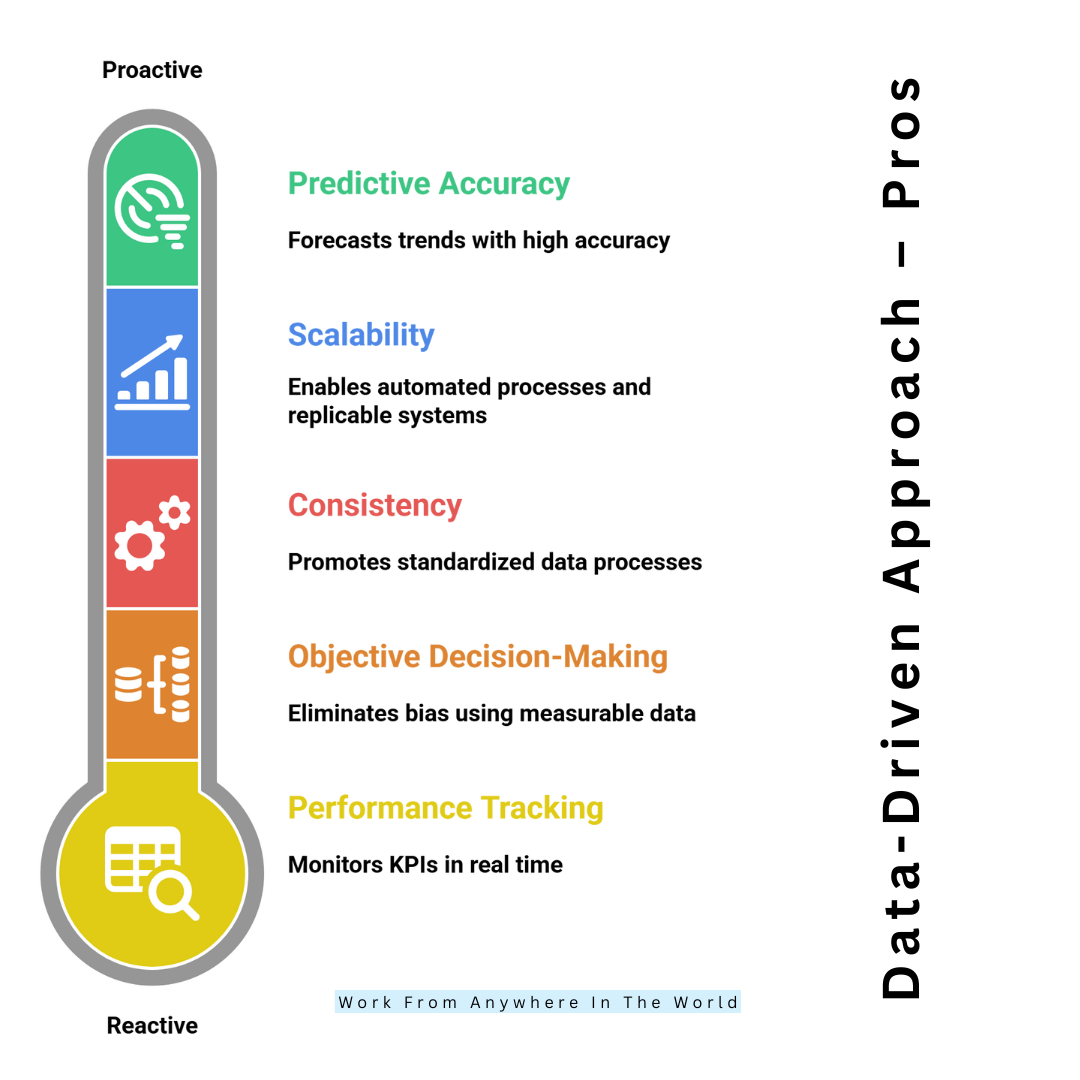
Data-Driven Approach – Cons
1. Over-Reliance On Data
In the debate of data-driven vs data-informed, over-reliance on data highlights the importance of blending analytics with human insight and creativity.
Data can’t capture every variable—like cultural shifts, emotional drivers, or sudden industry disruptions. For example, customer feedback might reveal sentiments that data trends don't fully reflect.
Rigid adherence to data can stifle innovation and discourage risk-taking, as employees may feel constrained by what the numbers suggest. Relying solely on historical patterns may also limit the ability to adapt to new opportunities.
Successful companies balance data insights with human judgment to foster creativity, adaptability, and a deeper market understanding.
2. Data Quality Risk
Poor or incomplete data can lead to incorrect conclusions and misguided decisions. If the data collected is inaccurate, outdated, or biased, the entire analysis may be flawed.
For example, decisions based on partial customer data might ignore significant market segments, resulting in missed opportunities or ineffective strategies.
Data entry errors, inconsistent reporting formats, or poorly managed databases increase the risk of misinformation. Organizations must invest in data governance, validation processes, and quality assurance to ensure data integrity.
Relying on flawed data can have far-reaching consequences—impacting everything from customer relationships to financial performance—making high-quality data management critical in any data-driven approach.
Wealthy Affiliate – Mini Review (2025)
If you’ve ever thought about turning your blog, passion, or niche into an online business,
Wealthy Affiliate (WA) is one of the most beginner-friendly platforms I’ve used.
It combines step-by-step training, website hosting, SEO research tools,
and an active community all in one place.
What I like most: you can start free (no credit card needed),
explore lessons, test the tools, and connect with other entrepreneurs
before upgrading. WA isn’t a “get rich quick” scheme — it’s a platform where success comes
from consistent effort and applying what you learn.
3. Analysis Paralysis
A heavy focus on data can lead to analysis paralysis, where decision-makers delay action while waiting for perfect data or exhaustive analysis.
In fast-moving markets, this hesitation can mean missed opportunities and reduced competitiveness. Leaders may become overly cautious, fearing decisions without comprehensive data.
This risk is particularly high in large organizations where bureaucracy slows down data interpretation and decision-making processes. While thorough analysis is essential, there’s a point where too much scrutiny prevents timely action.
Encouraging a culture that values informed but decisive action helps avoid paralysis and ensures that data supports decision-making without becoming a roadblock to progress.
4. Ignores Context
In the data-driven vs data-informed debate, the latter emphasizes the importance of context, ensuring decisions go beyond numbers to reflect real-world nuances.
For instance, a decline in sales might show up as a negative data point, but the underlying cause—like a global event or cultural shift—may not be reflected in the numbers.
Relying solely on data without understanding the broader environment can result in misguided strategies. Human insights, customer stories, and qualitative feedback provide essential context that complements complex data.
Ignoring these elements risks making decisions that are technically correct but practically ineffective. Leaders must recognize that numbers tell part of the story, and understanding context is crucial for informed decision-making.
5. Ethical Concerns
Unthinkingly following data-driven insights can lead to unethical decisions, especially when algorithms or data sets contain inherent biases.
For example, AI-driven hiring tools trained on biased historical data may inadvertently discriminate against certain groups. Data privacy is another concern.
Collecting and using data without proper consent can harm customer trust and lead to legal issues. Ethical data use requires critical oversight, transparency, and a commitment to fairness.
Organizations must evaluate not just what the data says, but also the moral implications of acting on it. Balancing business goals with ethical responsibility is essential to maintaining trust and integrity.
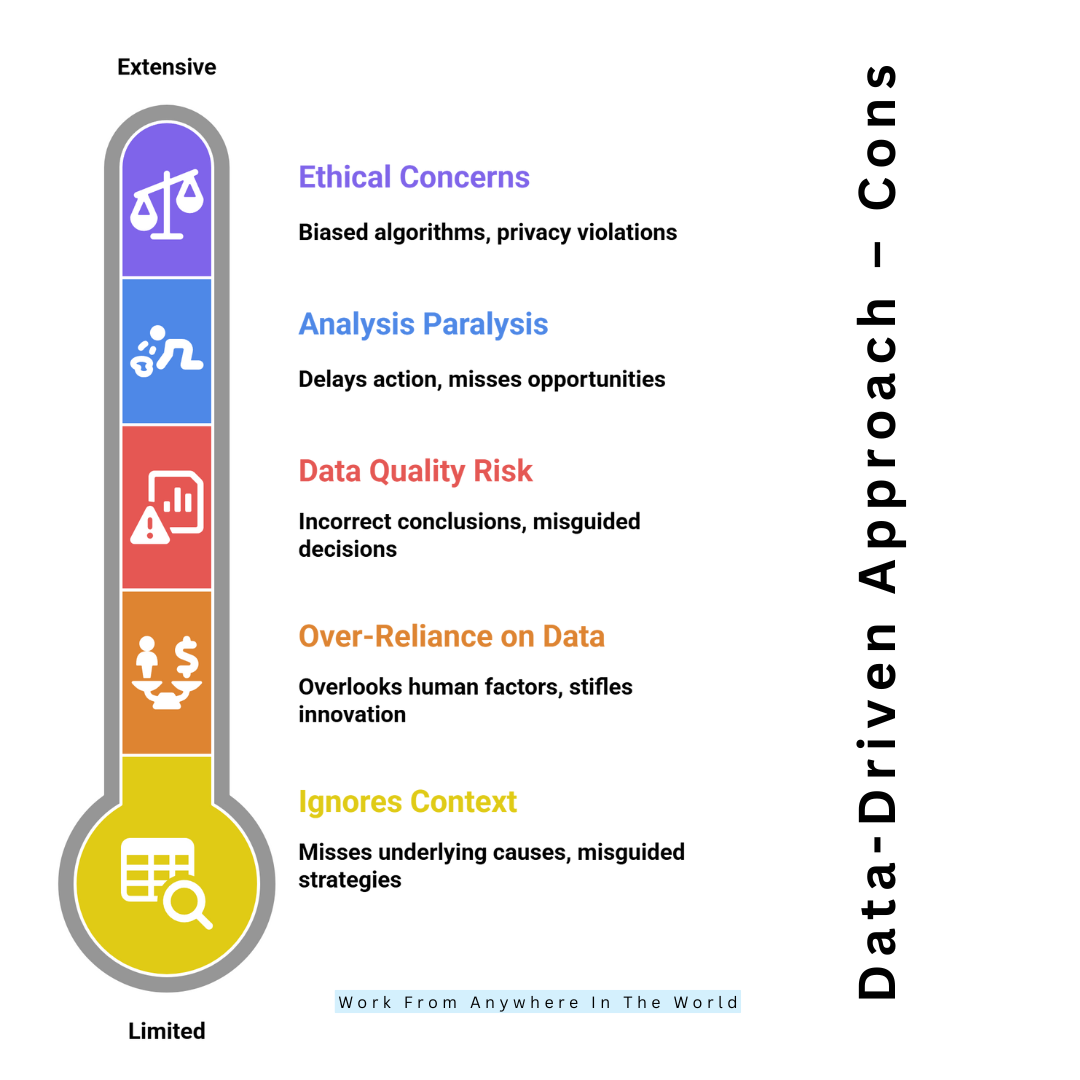
Data-Informed Approach – Pros
1. Balanced Decision-Making
A data-informed approach strikes a healthy balance between complex data and human experience. The concept of data-driven vs data-informed highlights how balanced decision-making blends analytics with human judgment for more adaptive and effective outcomes.
It empowers leaders to make decisions that reflect both factual evidence and nuanced judgment. For example, a marketing manager may use customer data to spot trends but also apply experience to tailor campaigns to specific audiences. This flexibility often leads to more practical and adaptive solutions.
By acknowledging both sides — the numbers and the human element — organizations create a decision-making process that is thoughtful, balanced, and well-rounded.
2. Flexibility
The data-informed approach allows businesses to adapt quickly to changing markets, customer needs, or unforeseen circumstances.
Unlike rigid data-driven models, this approach values the ability to pivot based on new insights or real-time situations. For example, during a crisis or sudden market shift, companies may need to rely on leadership intuition alongside data trends.
This flexibility encourages teams to consider alternative solutions rather than sticking to strict data models. It promotes resilience and responsiveness in dynamic industries.
A flexible mindset—supported but not confined by data—often results in more innovative strategies that can evolve with changing customer sentiments and business landscapes.
3. Encourages Innovation
In the data-driven vs data-informed conversation, the data-informed approach encourages innovation by blending insights with creative freedom and strategic risk-taking.
Data can guide and inspire, but it doesn’t limit imaginative thinking or the pursuit of unconventional ideas. Innovators often take calculated risks that may not be immediately supported by existing data, allowing for breakthroughs in products, services, or processes.
For instance, pioneering brands often launch bold marketing campaigns based on gut feelings mixed with market knowledge rather than clear-cut data.
A culture that values both insights and creative freedom fosters a dynamic environment where innovation thrives alongside informed decision-making and strategic risk-taking.
4. Reduces Risk Of Bias
While purely instinctive decisions can suffer from personal biases, a data-informed approach checks human judgment against reliable data.
This method encourages leaders to validate their assumptions with factual evidence before making choices. For example, a product manager may believe a feature is unpopular, but user data might reveal the opposite.
By cross-referencing intuition with analytics, organizations minimize the risk of acting on unfounded beliefs or emotional responses.
This balance leads to more grounded, objective decisions while still embracing the flexibility of human insight. It’s a powerful way to combine the strengths of both analytical reasoning and personal experience.
5. Stronger Human Connection
In the context of data-driven vs data-informed, valuing qualitative insights fosters stronger human connections and more empathetic, customer-centric business strategies.
Businesses that incorporate human understanding into their decision-making build stronger relationships with clients and stakeholders.
Customer support teams, for example, can customize assistance experiences by combining feedback data with sympathetic interactions. Recognizing the human side of business fosters loyalty, trust, and brand connection.
By blending quantitative data with qualitative insights, companies avoid treating customers as mere data points. This approach emphasizes empathy, relevance, and cultural sensitivity — critical factors in customer-centric industries where personal connection plays a key role in success.
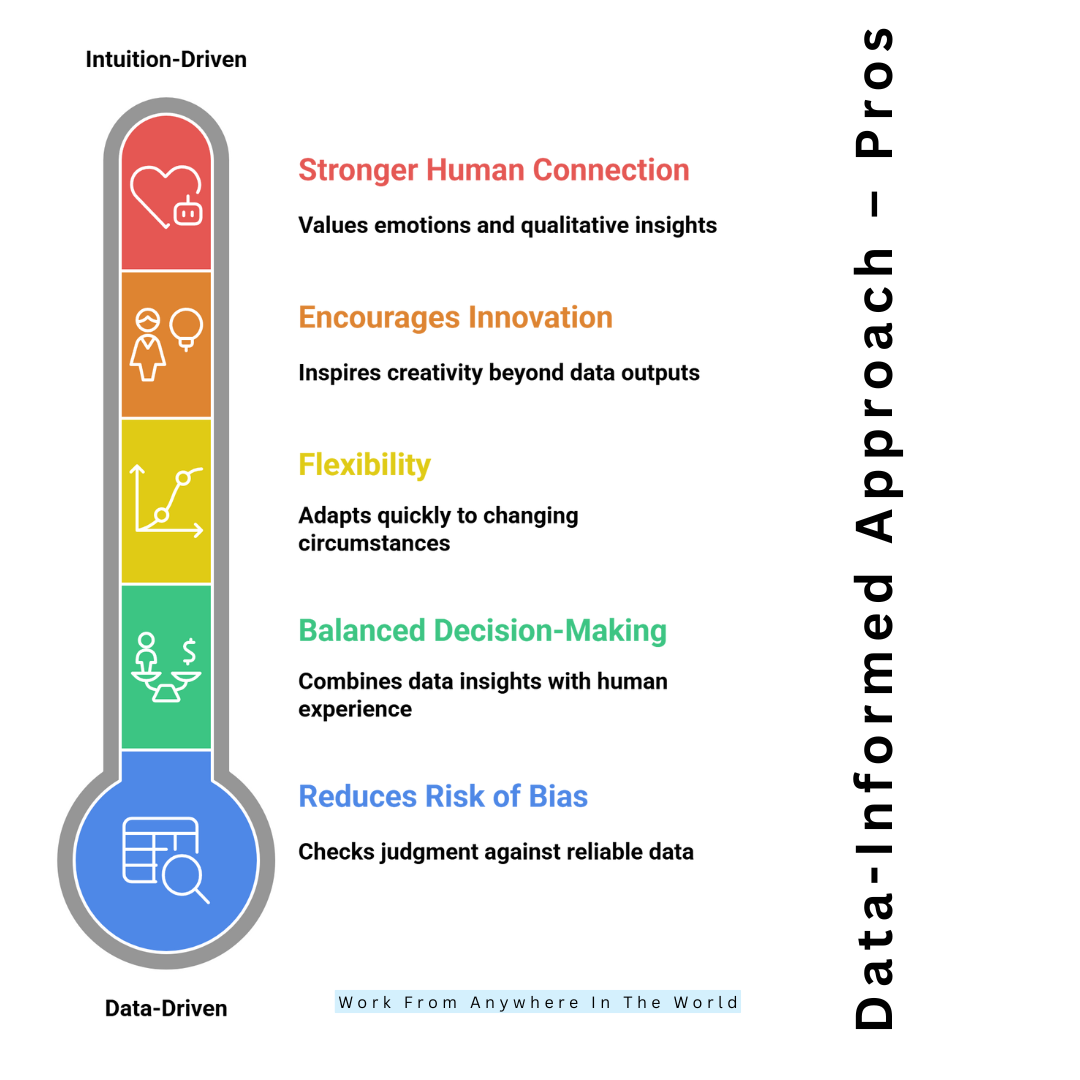
Data-Informed Approach – Cons
1. Subjectivity Risk
In the data-driven vs data-informed discussion, the latter risks subjectivity when intuition overshadows data, highlighting the need for balanced decision-making frameworks.
When leaders rely heavily on personal intuition or anecdotal experiences, they may undervalue or ignore essential data insights. This imbalance can lead to biased judgments or flawed strategies.
For example, dismissing unfavourable data because it contradicts a gut feeling may result in poor outcomes. Without discipline, subjective opinions may overshadow objective facts.
To avoid this pitfall, organizations must train leaders to respect data while applying critical thinking. A structured decision-making process helps ensure that subjective insights complement, rather than replace, valuable analytical evidence.
2. Inconsistent Application
Data-informed decision-making can suffer from inconsistency if not guided by clear frameworks or policies. Different leaders or teams may interpret the balance between data and intuition differently, leading to varied and sometimes conflicting decisions across an organization.
This lack of standardization risks misalignment, confusion, and inefficiency. For instance, one manager might heavily prioritize data, while another leans too much on instinct, causing operational discrepancies.
Without clear guidelines on how to weigh data versus human input, decision quality may fluctuate. Establishing company-wide best practices for integrating data with experience can help mitigate inconsistency and maintain strategic alignment across departments.
3. Slower Decision Processes
In the data-driven vs data-informed debate, the latter can lead to slower decision processes due to its emphasis on discussion and judgment.
Unlike a strict data-driven approach, which may follow clear-cut metrics, a data-informed process involves discussions, interpretations, and debates.
This thoroughness can be beneficial for complex decisions but may hinder responsiveness when quick action is needed. For example, waiting for cross-functional input or prolonged analysis may delay a product launch or market response.
To address this, organizations must strike a balance—ensuring that decisions are well-informed without becoming bogged down by excessive deliberation.
Time-sensitive situations demand streamlined processes with predefined criteria for swift action.
4. Misinterpretation Of Data
Data-informed decisions can be undermined by the misinterpretation or selective use of data, especially when leaders prioritize anecdotal evidence.
Human bias may lead to cherry-picking data that supports a desired narrative, while ignoring contradictory facts. This selective reasoning skews decisions and diminishes the credibility of the decision-making process.
For example, focusing only on positive customer reviews while ignoring critical feedback can create a false sense of success.
To mitigate this, organizations need strong data literacy and essential skills of analysis within their teams. Proper training ensures that data supports sound judgment, rather than being manipulated to justify preconceived ideas.
5. Requires Skilled Leadership
A successful data-informed approach demands leaders who can skillfully balance analytical insights with human judgment.
Not every manager possesses the expertise to interpret data accurately or the confidence to weigh it against intuitive knowledge.
This can lead to either over-dependence on numbers or decisions based solely on gut feelings. Effective data-informed leadership requires experience, critical thinking, and a nuanced understanding of both data analysis and human factors.
Without these skills, organizations may struggle to harness the full benefits of this approach. Investing in leadership development, data literacy, and decision-making training is crucial to ensure the approach works as intended.
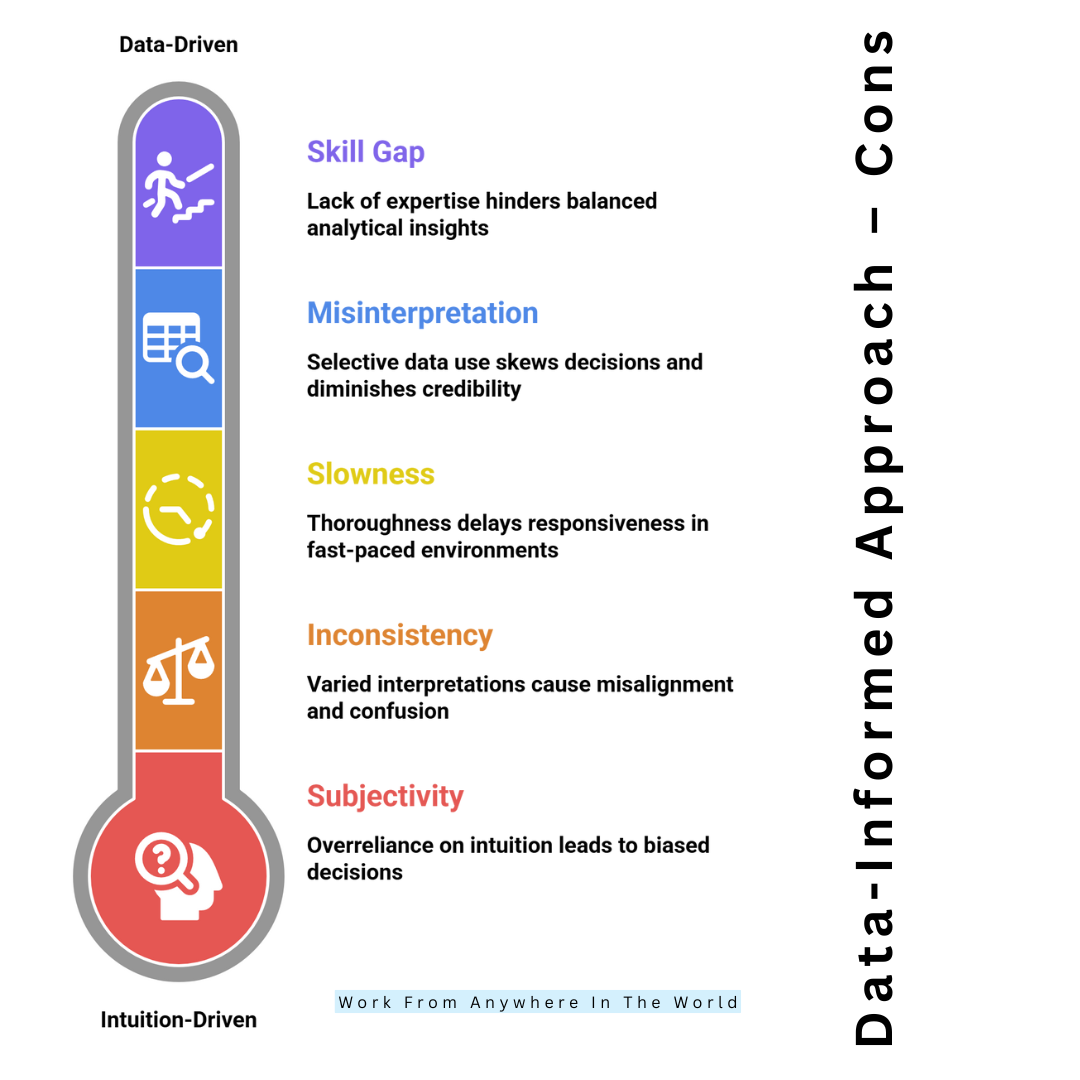
FAQs
Which Approach Is Better For Business Decision-Making?
It depends on the context. Data-driven is ideal for scalable processes and routine operations, while data-informed works better in dynamic situations that require flexibility, creativity, and nuanced judgment. Most successful organizations blend both approaches.
Can A Company Use Both Data-Driven And Data-Informed Strategies?
Yes, many businesses adopt a hybrid model—using data-driven methods for analytics and operations while applying data-informed strategies for leadership decisions, creative projects, and customer engagement. The key is knowing when each approach fits best.
Conclusion
Choosing between Data-Driven vs Data-Informed isn’t about right or wrong — it’s about finding the right fit for your goals.
By blending insights with intuition or entirely relying on analytics, you can unlock more innovative strategies and better outcomes.
Stay flexible, stay curious, and let data guide your decisions with confidence. Ready to empower your business? Start applying these approaches today and see the difference!
I trust you enjoyed this article on Transform Decisions With Data-Driven vs Data-Informed. Please stay tuned for more insightful blogs on affiliate marketing, online business, and working from anywhere in the world.
Take care!
— JeannetteZ
💬 Your Opinion Is Important To Me
Do you have thoughts, ideas, or questions? I’d love to hear from you. Please leave your comments below or email me directly at Jeannette@WorkFromAnywhereInTheWorld.com.
📚 More Work From Anywhere Reads
🚀 Ready to Build a Business You Can Run from Home
Or anywhere in the World?
Imagine creating income on your terms — from home, a cozy café, or wherever life takes you.
With the right tools, training, and community support, it’s entirely possible.
Start your own online business for free — no credit card needed.
Disclosure
This post may contain affiliate links. As an Amazon Associate and participant in other affiliate programs, I earn from qualifying purchases at no extra cost to you. Please read my full affiliate disclosure.




